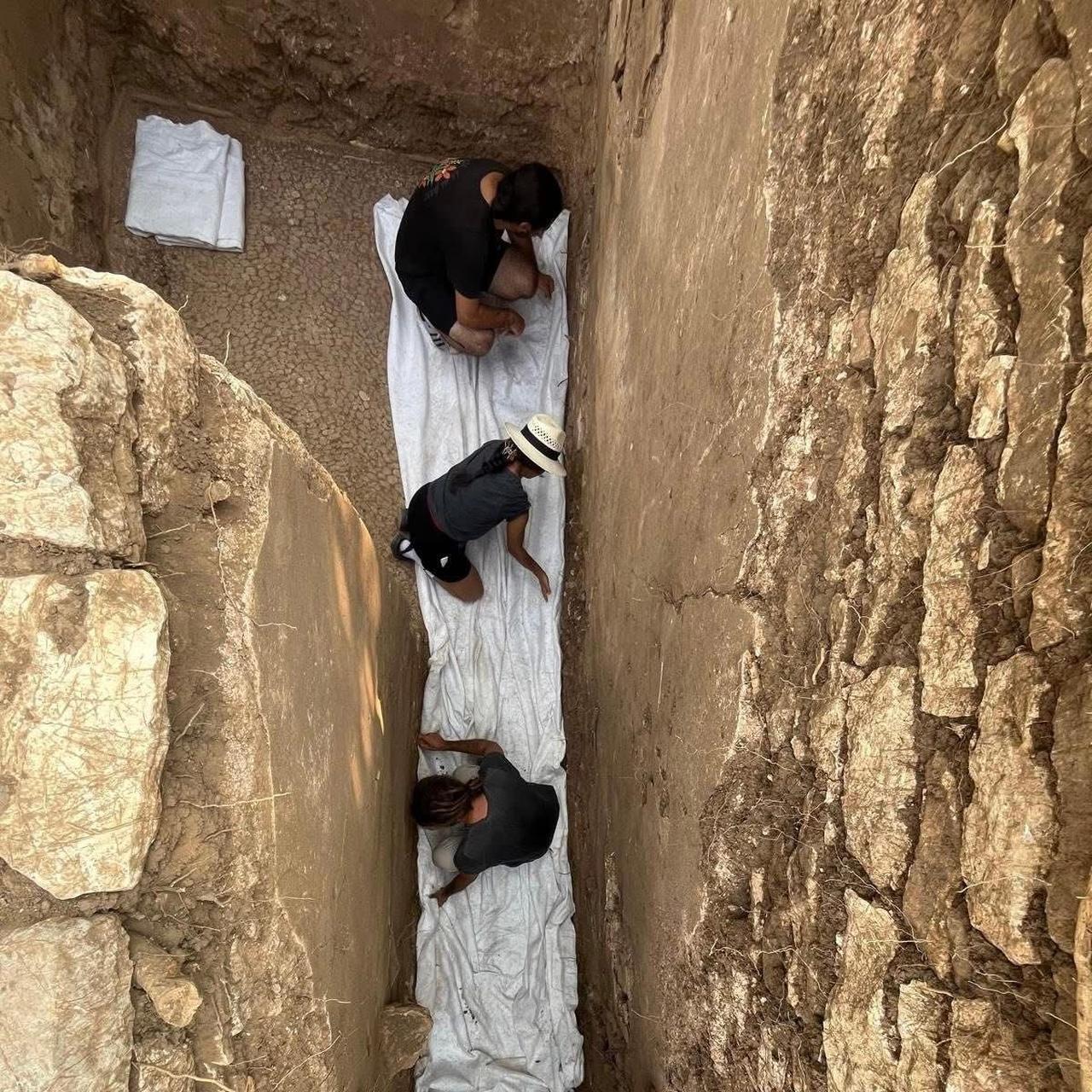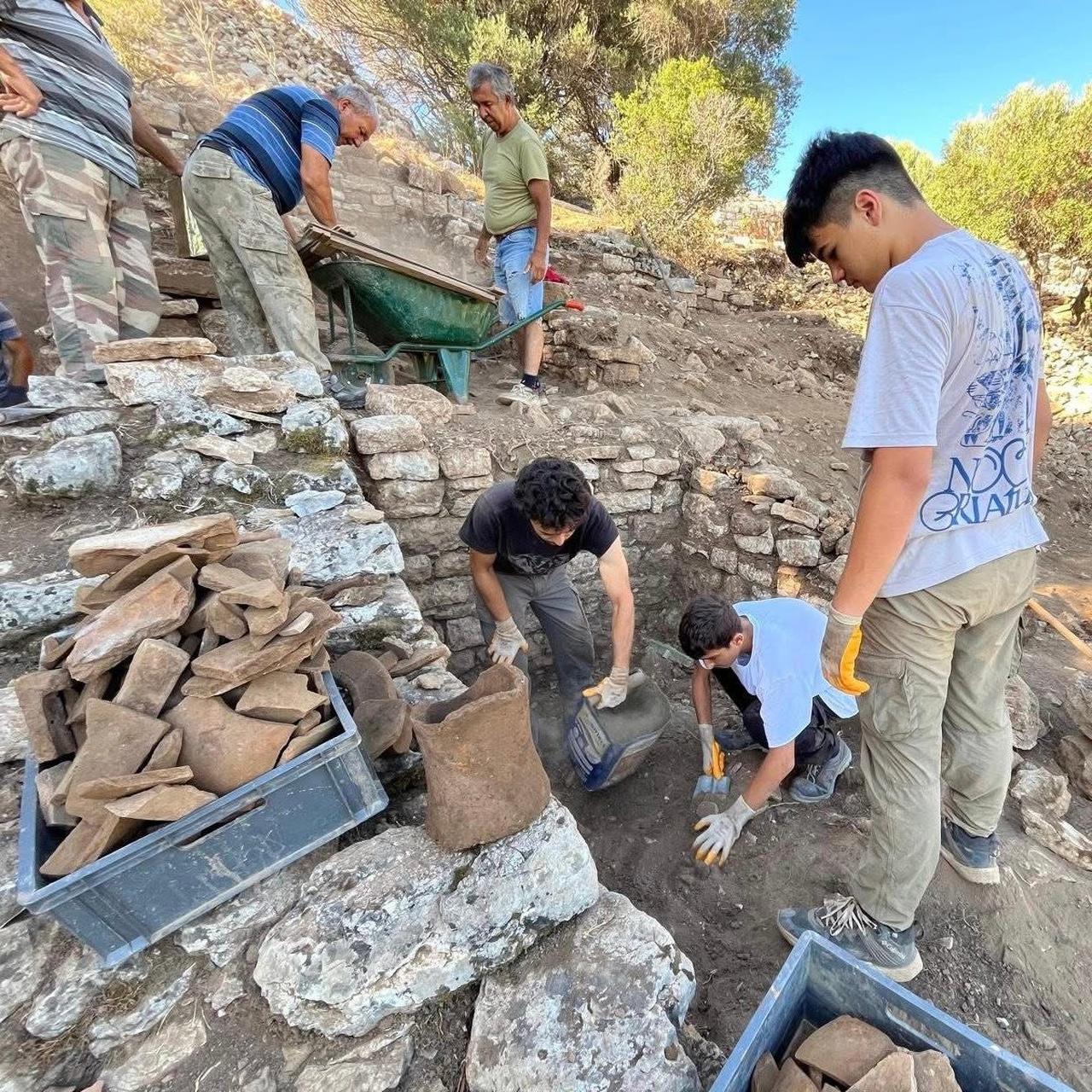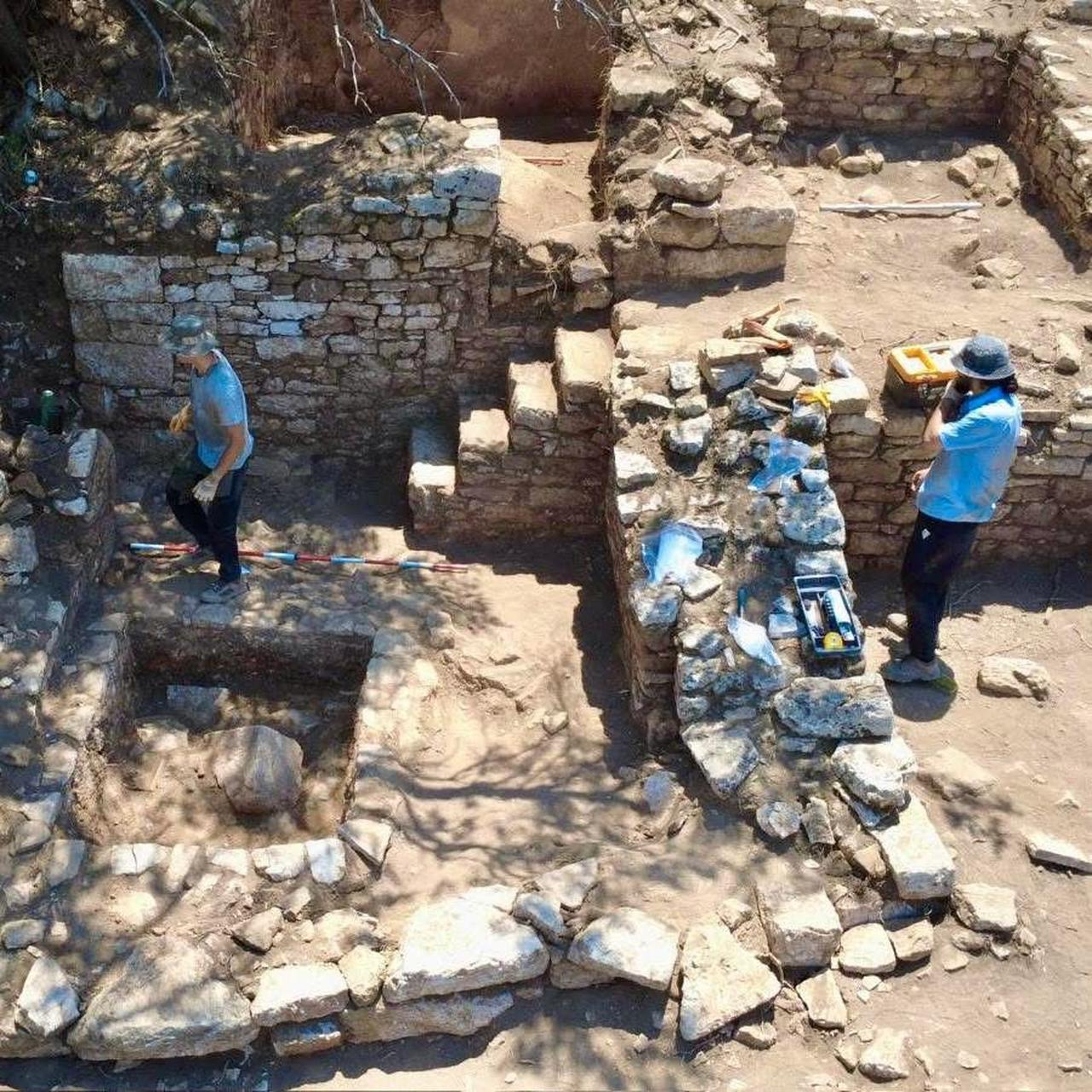
Excavations at the ancient theatre of Amos, located in Türkiye's Marmaris district, are progressing rapidly, shedding new light on daily life in the historic city.
The 2025 fieldwork is part of the “Heritage for the Future” initiative supported by Türkiye’s Ministry of Culture and Tourism. The project is carried out with the cooperation of the Marmaris Chamber of Commerce, the Marmaris Municipality, and Marti Hotel & Marina as the main sponsor.

Archaeologists have revealed plastered walls and mosaic floors estimated to date back approximately 2,300 years.
The ongoing digs in residential areas are providing significant insights into the city’s social, economic and domestic life.
Private spaces within the excavated houses offer new clues about Amos’s past. These findings indicate that the ancient city was not only active in agriculture and trade but also had organized housing, production areas, and social spaces, highlighting its importance along the Mediterranean coast.

Amos was part of the Rhodian Peraia in Caria and likely had strong connections with the city of Lindos, as supported by inscriptions using the Doric dialect. In the fifth century B.C., Amos joined the Delian League alongside other Rhodian areas. The city’s residents were full Rhodian citizens, although those of Lindian descent did not hold citizenship at Lindos.
Around 200 B.C., inscriptions show that Amos had a board of “hieromnamones,” or “sacred rememberers,” responsible for recording legal agreements and other civic matters. The city also formed an economic union with nearby communities to manage tributes collectively.

The current discoveries at Amos contribute valuable evidence about life in an ancient Mediterranean settlement.
According to experts, by uncovering domestic structures, social spaces, and administrative systems, the excavations provide a clearer picture of how the city functioned and interacted with surrounding regions.